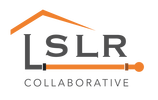Improving How We Communicate
the Risk
|
|
<
>
Communicating the hazards posed by lead in water is challenging because the consumers have heard so much about lead, its sources, and its risks over the years. Once these understandings are established, expanding or updating them can be challenging. The public health community generally considers lead in drinking water as secondary to lead-based paint and that the water is safe if the level is below the lead action level of 15 ppb. They may not be aware that 15 ppb is related to the effectiveness of the utility’s corrosion control program and has no relationship to resident health. The concept that there is no safe level of exposure to lead for children or adults is difficult to act on since zero is nearly impossible to achieve since lead is ubiquitous in our plumbing, our homes, and our communities. It is particularly difficult to communicate the risk posed by lead service lines (LSLs) for the following reasons:
As long as residents or property owners are responsible for funding all or part of an LSL replacement, there are two situations where it is particularly important to communicate the risks posed by LSLs and whether they have one.
Opportunities to support efforts include:
|
